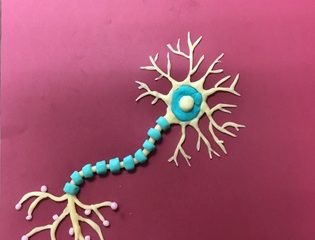In the midst of copy editing a 53-page, three-column, single-spaced pdf of references for our intro psych textbook, it occurred to me that I honestly didn’t know how much faculty or students actually use the reference list in textbooks, or if they used them, how. I posed the question to the ever-helpful community of the Society for the Teaching of Psychology on their Facebook page, and was delighted by the creativity and thoughtfulness of the responses.
Many faculty seemed to use the reference list to fact check. I admit to experiencing a racing heart whenever I get a notification that our book is in one of those “What Intro Psych Texts Get Wrong” kinds of articles (although so far, we have always been in the “these get it right” columns). But I’m glad that instructors have a way to compare what we say with what the original article says, especially for newer articles they might not otherwise know well.
Other faculty mentioned that they use the reference list when students express an interest in learning more about something described in the book. Those are moments to treasure, right?
Still others actually build assignments out of the reference list by asking the students to pull the original article and compare it to what was said in the book. This seems to be a great way to build information literacy and library skills.
One of the biggest challenges with the references in this current edition is adapting to APA 7th. Our book is known in the publishing industry as “the science book” (we like that) and we use quite a few references from medicine, neuroscience, and genetics. Often these articles have very large numbers of authors, and APA 7th requires you to put in 20. Whew! I have to say, my most favorite authors in all the world are Fire Erowid and Earth Erowid. You just can’t be bored editing a reference list that includes their names (and yes, they are real people and yes, they contribute to articles on various recreational drugs).
Even in our first edition, John Cacioppo wanted to skip APA style altogether and simply use numbered endnotes in the medical fashion. He believed this would help readability, as the student (and text readers for students with disabilities) have a lot of work to do to get past APA in-text citations. We were definitely outvoted by the reviewers at that time, but I think it might be worth revisiting. At least APA 7th lets us use “et al.” at first mention instead of six names, which is very helpful.
So editing the reference list is not the most glamorous thing we authors get to do, but I feel much more energized now that I know so many instructors appreciate our efforts.


